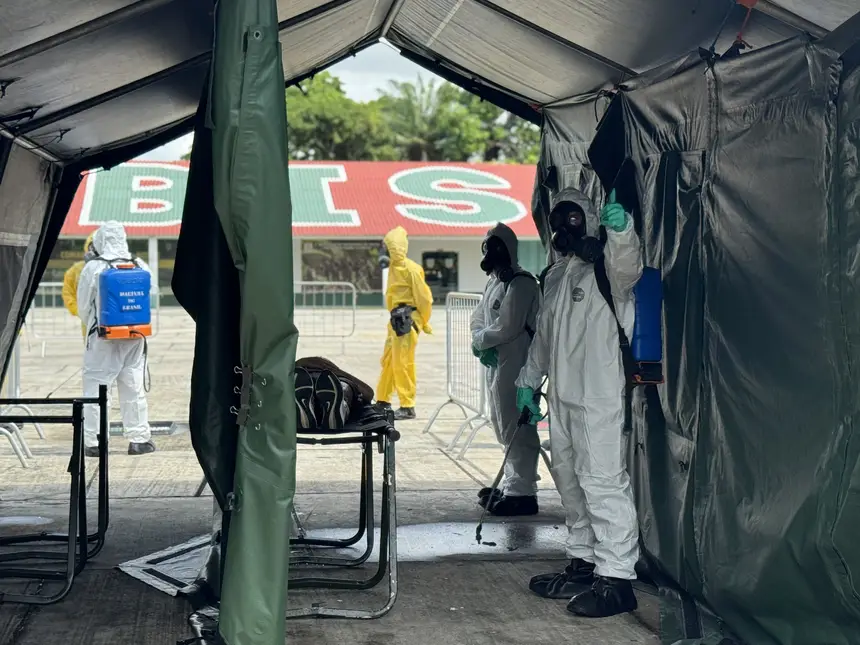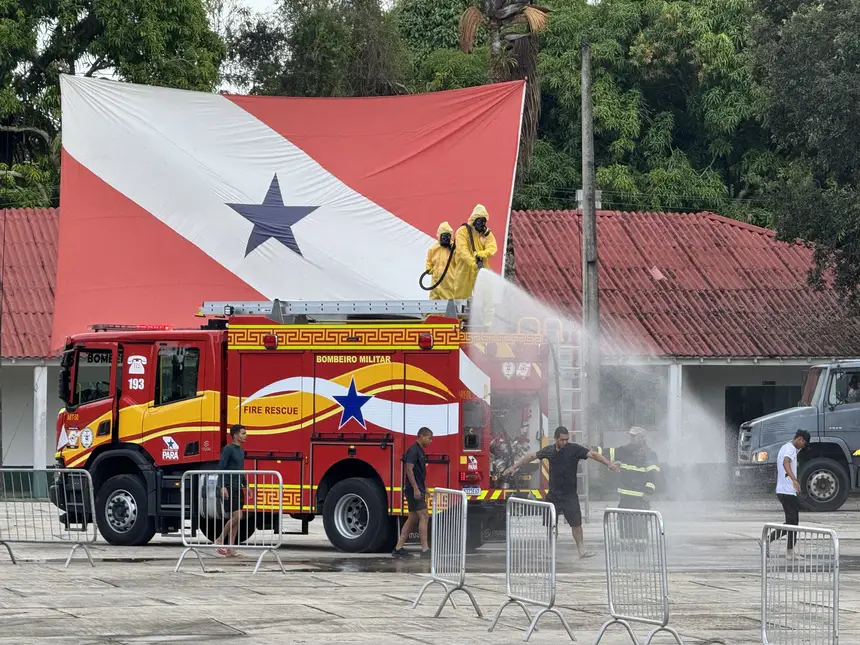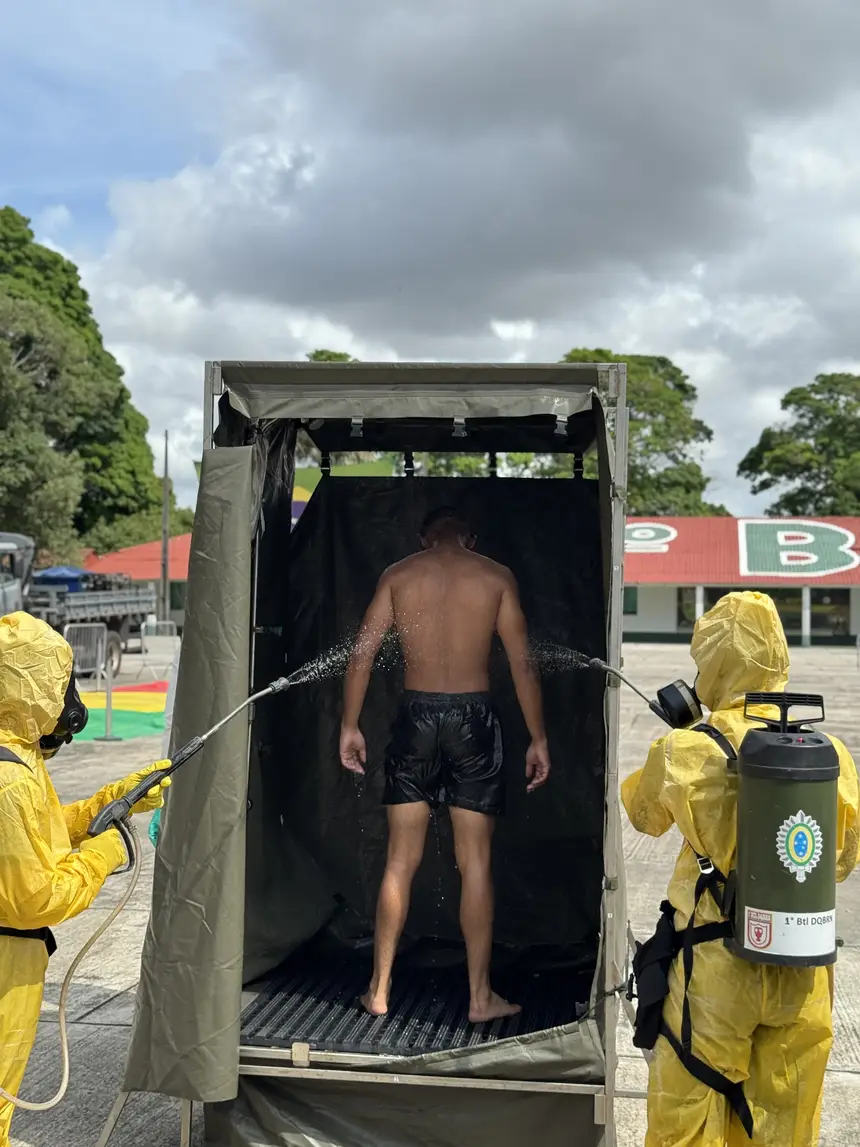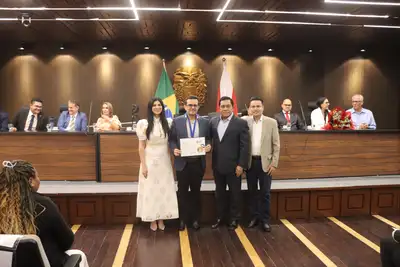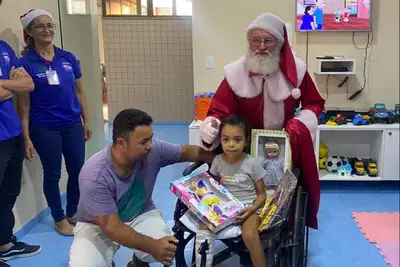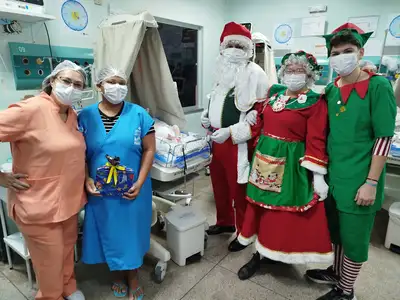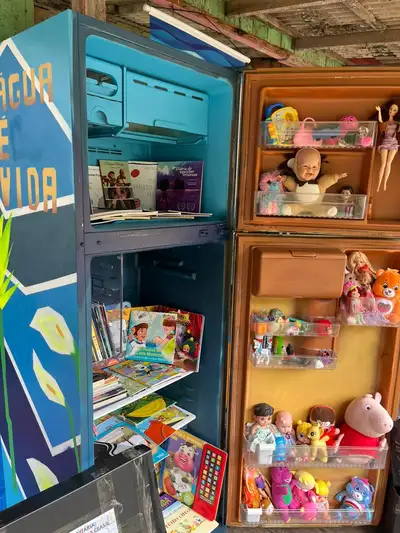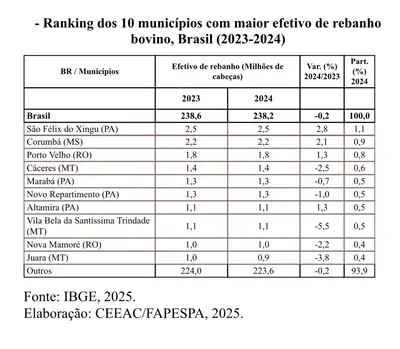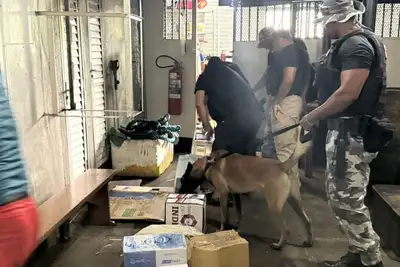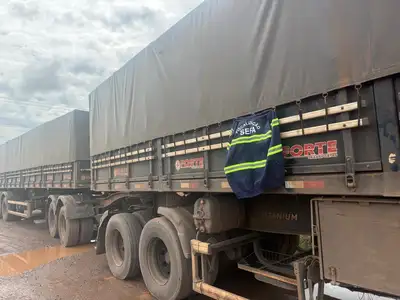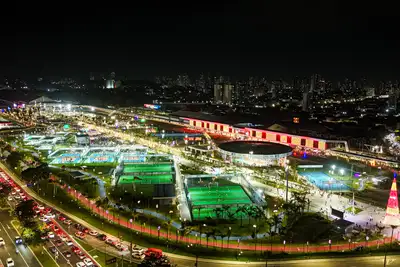Sespa and Armed Forces conduct training for chemical, biological, and radiological emergencies
The training reinforces the integration between public health, security, and rescue for rapid action in risk situations during the environmental conference

The State Department of Public Health (Sespa) participated from August 4 to 8 in specialized training in Chemical, Biological, Radiological, and Nuclear Defense (DQBRN), promoted by the Joint Operational Command Marajoara – a structure created by the Ministry of Defense to coordinate security and defense actions during the 30th United Nations Conference on Climate Change (COP30).
The activity took place at the 2nd Jungle Infantry Battalion (2nd BIS) in Belém and brought together Armed Forces, Military Fire Brigade, Samu (Mobile Emergency Care Service), and technical teams from Sespa in a practical exercise to enhance the response capacity to emergencies involving hazardous agents.

Army General Júlio César Belaguarda Nagy de Oliveira, leading the Joint Command Marajoara, emphasized that this was the second specific training on QBRN defense promoted by the group, composed of military personnel from the Navy, Army, and Air Force. “The initiative unites efforts from different sectors responsible for the protection and assistance to the population, to enhance the qualification of military personnel and prepare teams to act both in prevention and in immediate response to incidents of this nature,” he stated.
The director of the Department of Environmental Health Surveillance and Worker Health of the Secretariat, Roberta Souza, highlighted that this integration is essential to reduce risks and strengthen the capacity to respond to emergencies. “The work is coordinated and involves everything from detecting the agent to directing victims to reference hospitals, with state backup planned for immediate support,” she explained.

Simulation and protocols - The training simulated the release of a chemical agent during the arrival of an authority, affecting the entourage and the audience present. From this scenario, evacuation procedures, pre-hospital care, decontamination, and referral to specialized units were activated.
The simulation was conducted by the Chemical Reconnaissance and Surveillance Platoon of the 1st QBRN Defense Battalion, commanded by Lieutenant Alessandro Ferreira. “The goal is to realistically train the containment of incidents and the recovery of affected people, equipment, and structures,” he informed. He further explained that chemical agents are unconventional weapons capable of causing severe effects on the body, such as suffocation, neurological impairment, and blockage of gas exchange in the blood.
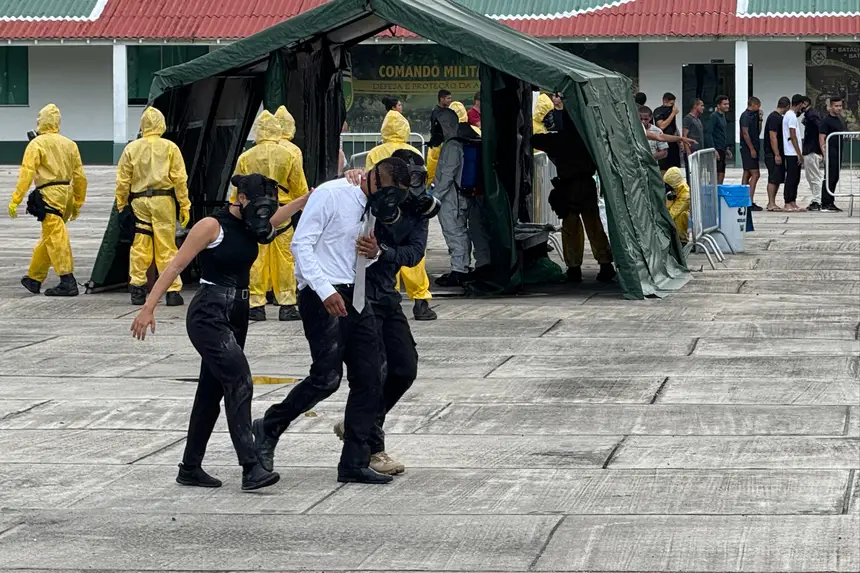
Care and reference units - In Pará, the Metropolitan Hospital of Urgency and Emergency (HMUE), in Ananindeua, is a reference for cases of contamination by chemical and radiological agents, while occurrences involving biological agents are directed to the João de Barros Barreto University Hospital.
Nayara Nonato, coordinator of the Sespa Hospital Admission Regulation Center, emphasized the importance of the correct flow of patient referrals to care units. “Regulation plays a fundamental role in this context. Victims exposed to chemical and radiological agents go to HMUE for stabilization, while biological cases go to Barros Barreto. When necessary, they can be transferred to national reference units,” she added.

The training integrates the strategic preparations for COP30, which will be held in November in Belém, reinforcing the readiness of health, security, and rescue teams to protect the population and the international delegations that will participate in the event.
Text: Bianca Botelho – Ascom/Sespa




